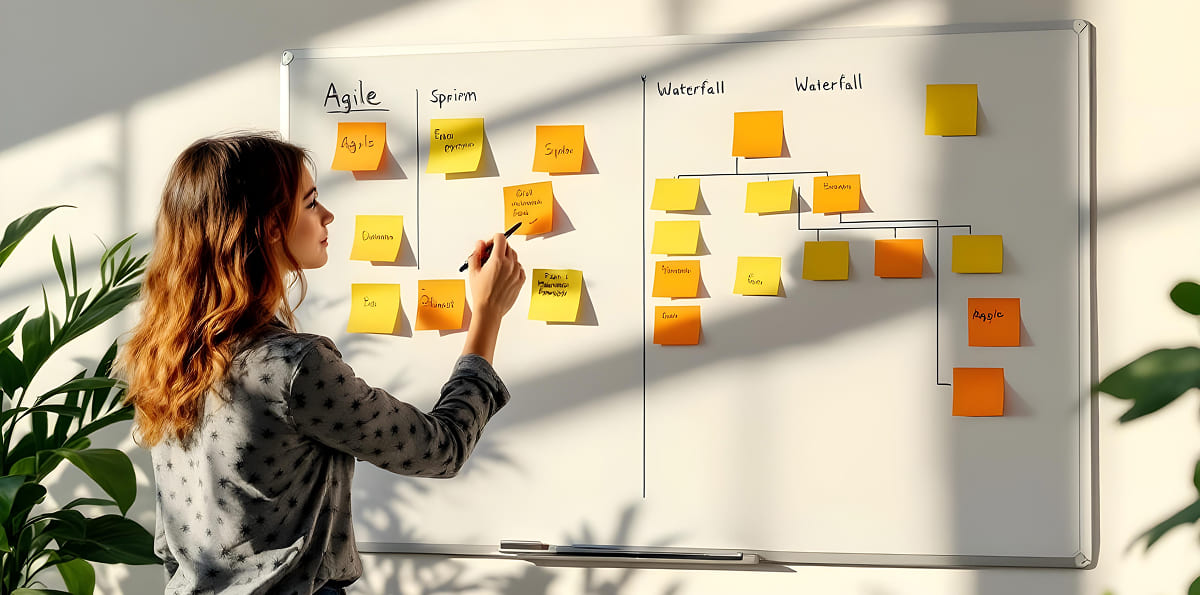
Agile vs. Waterfall: Which Is Better for Your Project?
When it comes to managing software development projects, one of the first decisions you’ll face is choosing a methodology. The two most commonly debated approaches are Agile and Waterfall. Each has its strengths, limitations, and ideal use cases. So how do you know which one is right for your project?


Understanding the Basics
Waterfall is a linear, step-by-step development approach. You gather all requirements upfront, move to design, then development, testing, and finally launch. It’s structured and sequential.
Agile, on the other hand, is iterative and flexible. Projects are broken into smaller chunks called sprints. Teams continuously build, test, get feedback, and adapt the product along the way.
Key Differences at a Glance
| Feature | Waterfall | Agile |
|---|---|---|
| Project flow | Sequential | Iterative & incremental |
| Flexibility | Low | High |
| Client involvement | At beginning & end | Throughout the project |
| Testing phase | After development | Ongoing, in every sprint |
| Best for | Fixed-scope projects | Evolving, fast-paced projects |
When to Use Waterfall
Waterfall works well for:
- Projects with clear, unchanging requirements
- Short-term projects with minimal client interaction
- Heavily regulated industries where documentation is key (e.g., healthcare, manufacturing)
- Development where failure to plan in advance could lead to compliance risks
Pros of Waterfall:
- Predictable timelines and costs
- Strong documentation trail
- Clear milestones and scope
Cons:
- Difficult to adapt once the project starts
- Testing happens late, so bugs may pile up
- Less feedback from users during development
When to Use Agile
Agile is ideal for:
- Projects where the final product may evolve over time
- Startups and growing businesses needing fast MVPs
- Continuous integration environments
- Teams that want early and frequent feedback from stakeholders
Pros of Agile:
- Faster time-to-market
- Flexibility to adapt to changes
- Continuous improvement through feedback
- Better collaboration and transparency
Cons:
- May lack clear timelines or budgets upfront
- Requires active involvement from clients
- Can become chaotic without strong management
Which One Is Better?
There’s no one-size-fits-all answer—it depends on your project.
Choose Waterfall if you need certainty, tight control, and fixed deliverables.
Choose Agile if you need speed, flexibility, and room to innovate along the way.
Hybrid Models: Best of Both Worlds?
Some teams adopt a hybrid model, combining the upfront planning of Waterfall with the flexibility of Agile sprints. This is especially useful in enterprise-level projects where strategic planning and rapid execution need to co-exist.
Final Thought
Your project’s success depends not just on what you build, but how you build it. Choosing the right development methodology lays the foundation for smooth execution, clear communication, and a product that actually meets user needs.
